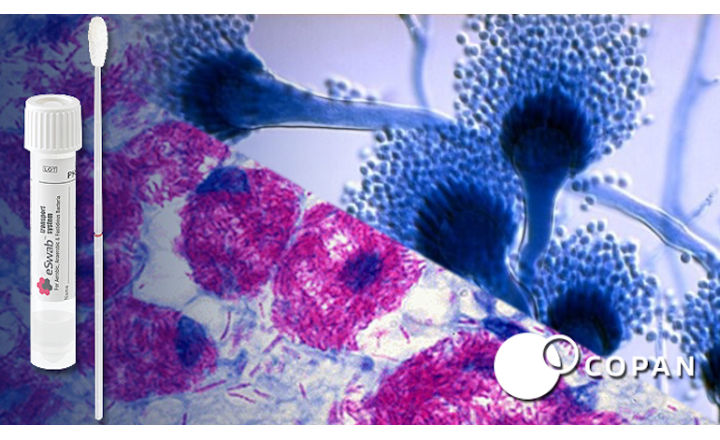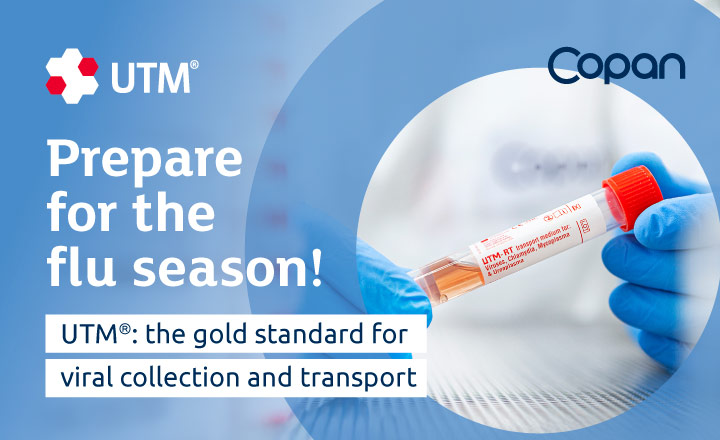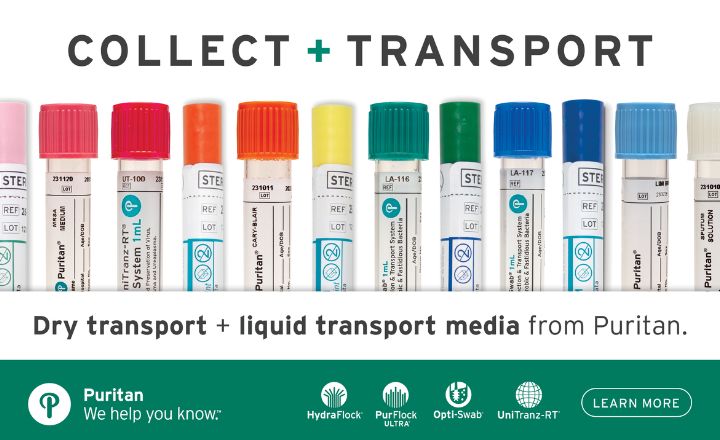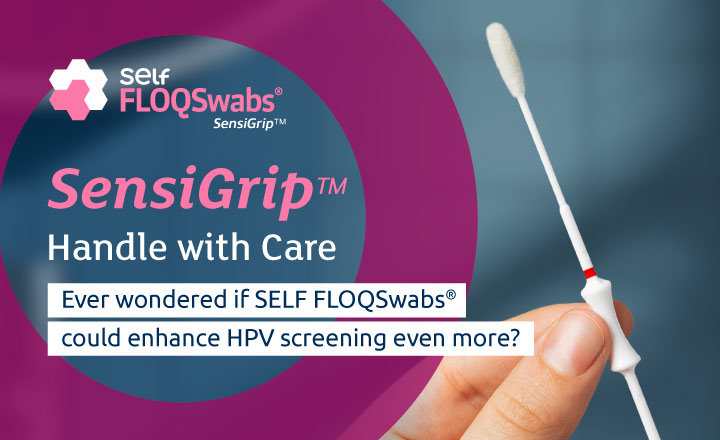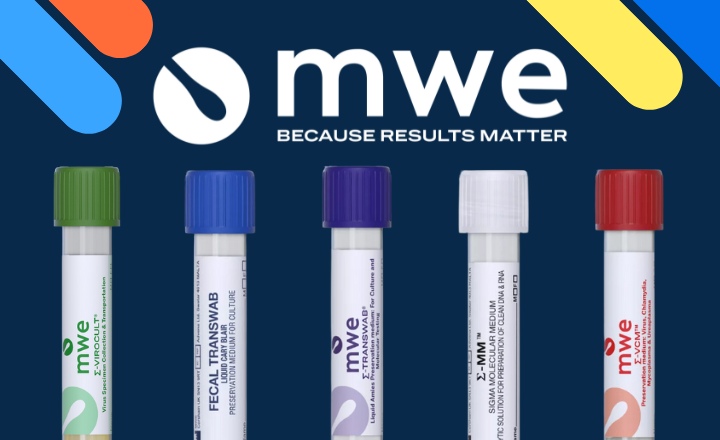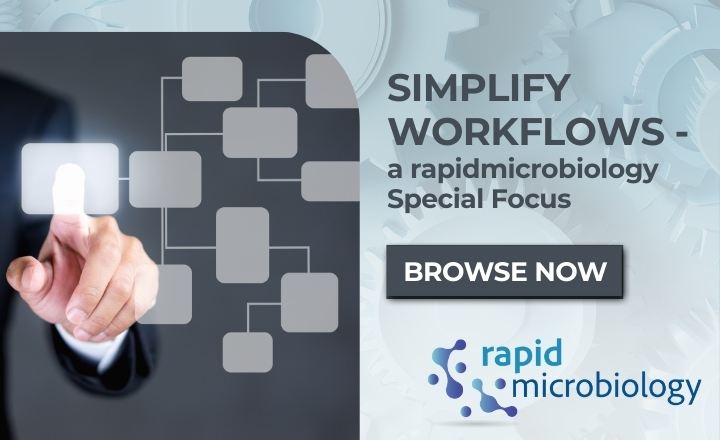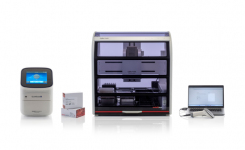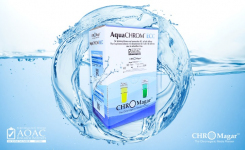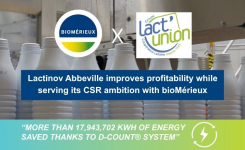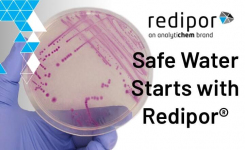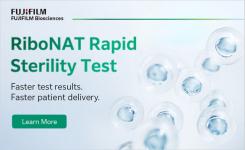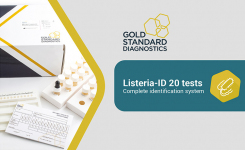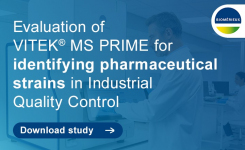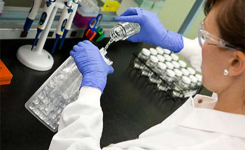…is a question we often receive at COPAN. We were often told in clinical microbiology that "swabs" were not good for the collection of specimens for microbiological cultures. References indicated that body fluids, tissues, and aspirates were the best materials to collect for the culture of specimens, especially for fungus and mycobacterial cultures, and that traditional wrapped fiber swabs were suboptimal 1,2. This was believed due to the small amount of specimen collected by routine swabs and the difficulty releasing the sample and retrieving organisms from these types of traditional fiber wrapped swabs 2,5. However, Baron et al. state that flocked swabs have become a valuable tool for specimen collection and have been shown to be more effective than Dacron, rayon, and cotton wrapped swabs because flocked swabs allow for more efficient release of specimen contents for evaluation 2. In this regard, two recent studies indicate that the use of flocked swabs, specifically as part of ESwab™ kits, are useful for the collection of specimens for fungal and mycobacterial cultures 3,4. These new studies, in addition to previous peer-reviewed publications on ESwab™, highlight it's broad capability for the collection and maintenance of microorganisms, and as an obvious choice as a multipurpose swab transport system*.
The first of these new studies evaluated the COPAN ESwab™ collection and transport system for its ability to maintain the viability of pathogenic fungi 3. The study followed the CLSI document M40-A2 and evaluated samples held at both room and refrigerator temperatures. A total of 19 clinical isolates and reference strains were evaluated in this study to include Candida albicans ATCC® 10231, Candida krusei ATCC® 6258, Candida guilliermondii ATCC® 6260, Candida glabrata ATCC® 66032, Cryptococcus neoformans ATCC® 66031, Trichophyton mentagrophytes ATCC® 9533, Trichophyton tonsurans ATCC® 28942, Trichophyton rubrum ATCC® 28188, Aspergillus niger, Aspergillus fumigatus, Lecythophora sp., Fusarium solani, and Trichosporon sp., Lichtheimia corymbifera, Mucor circinelloides, and Rhizopus microsporus, Curvularia clavata, Phialophora americana, and Alternaria alternata. Concentrations of these organisms were standardized to a 0.5 McFarland turbidity suspension. One hundred microliters of this inoculum was delivered directly to a flocked swab and following this, 10 μl aliquots were dispensed onto agar plates for control colony enumeration. Colony counts equal to or greater than those seen at the time zero evaluation at both room, and refrigerator temperatures were determined. The results indicated that the COPAN ESwab™ system effectively maintained prevalent opportunistic fungal organisms for at least 48 hours at both temperatures. The researchers concluded that they were confident that the COPAN ESwab™ was suitable for fungal viability and transport in accordance with the CLSI standard for clinically important fungi for up to 48 hours at both temperatures.
In the second study, the investigators evaluated the ability of the COPAN ESwab™ to maintain the viability of non-tuberculous mycobacterial (NTM) isolates for up to 48 hours at both room and refrigerator temperatures 4. Nine NTM clinical isolates were evaluated in the study to include Mycobacterium porcinum, M. abscessus subsp. abscessus, M. senegalense, M. mucogenicum, M. fortuitum, M. avium, M. chelonae, M. marinum, and M. haemophilum, and Nocardia asteroides ATCC® 1619247. Suspensions of these organisms were adjusted to a 0.5 MacFarland standard and then serially diluted 1:10 in normal saline to obtain the working suspensions. One hundred microliters of each working suspension were placed into 18 wells of a microtiter plate. ESwab™ liquid Amies was placed into the wells and allowed to absorb the inoculum, then added back to their vial. 100µL of the ESwab™ inoculum was then plated onto a Middlebrook 7H10 agar plates, streaked for isolation, and incubated for the zero hour counts. The remaining transport medium in ESwab™ were held at room and refrigerator temperatures for 24 and 48 hours prior to culturing. Colony counts after 24 and 48 hours of storage at both temperatures were compared to time zero hour counts. The viability of all organisms from the ESwab™ was maintained for all the NTM organisms, and the Nocardia isolate for up to 48 hours, at both temperatures as compared to time zero counts. These investigators concluded that their results indicated the COPAN ESwab™ collection and transport device appears to be an appropriate system for the maintenance, transport, and recovery of select NTM and Nocardia species known to cause skin and soft tissue infections.
Although there is little disagreement that body fluids, tissues, and aspirates are the preferred materials to collect for the culture of specimens for fungus and mycobacteria, the use of ESwab™ has been shown to maintain the viability of these organisms and to release most of the sample into the media allowing for suitable culture material. Knowing this additional performance capability can support swab standardization best practices within an institution, minimizing SKUs with its multipurpose capability and avoiding wrong swab selection. With the incorporation of ESwab™ into our collection device toolbox, we can now concentrate on other important issues pertaining to appropriate specimen collection.
*Always read the manufacturer’s package insert for specific instructions regarding specimen collection and transport for the type of test kit being used.
- Miller M, Miller S. 2017. A guide to specimen management in clinical microbiology. 3rd ed. ASM Press. Washington D.C.
- Baron EJ, Miller JM, Weinstein MP, et al. A guide to utilization of the microbiology laboratory for diagnosis of infectious diseases: 2013 recommendations by the Infectious Diseases Society of America (IDSA) and the American Society for Microbiology (ASM)(a). Clin Infect Dis. 2013;57(4):e22–e121.
- Gandhi B, Summerbell R, Mazzulli T. 2018. Evaluation of the COPAN ESwab transport system for viability of pathogenic fungi by use of a modification of Clinical and Laboratory Standards Institute document M40-A2. J Clin Microbiol 56:e01481-17.https://doi.org/10 .1128/JCM.01481-17.
- Gandhi B, Woods G, Mazzulli T. 2019. Recovery of nontuberculous mycobacteria and nocardiae causing skin/soft tissue infections using the COPAN ESwab Collection and Transport System. J Clin Microbiol doi:10.1128/JCM.01302-19.
- Anhalt J, Heiter B, Naumovitz D, Bourbeau P. 1992. Comparison of Three Methods for Detection of Group A Streptococci in Throat Swabs. J Clin Microbiol Vol 30., No. 8, P 2135 – 3138 Aug 1992.






